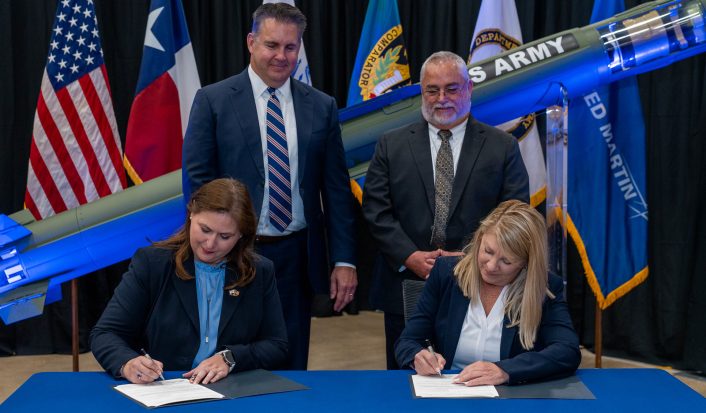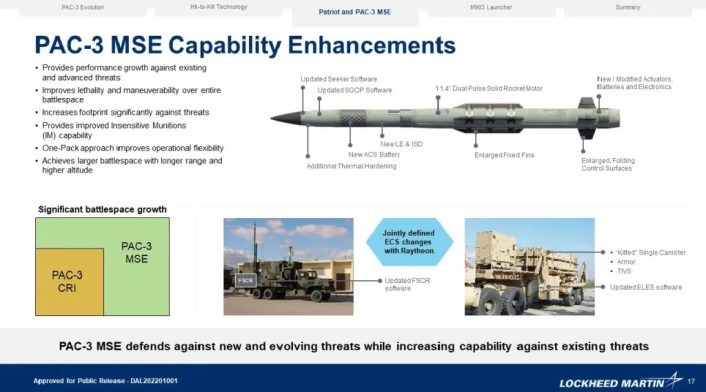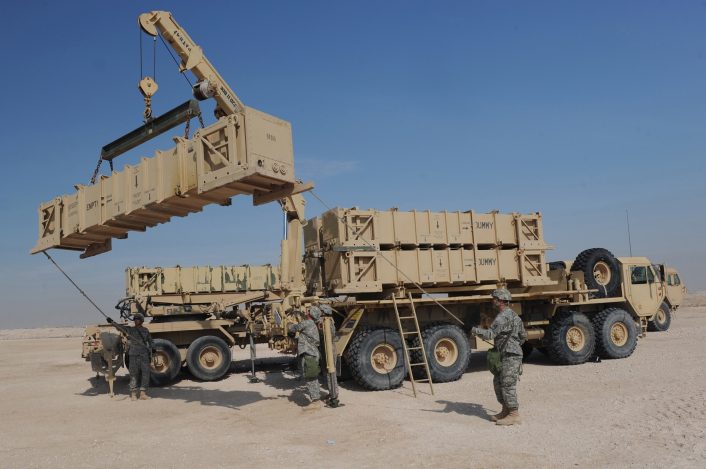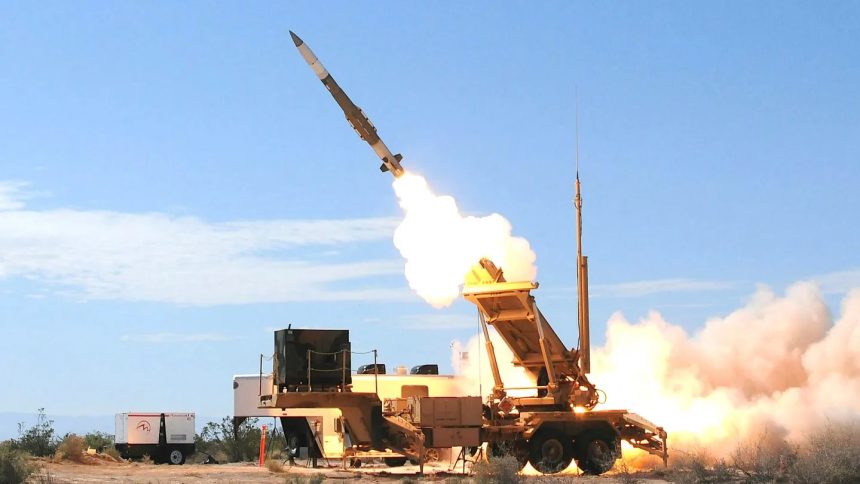The multi-year contract covers 1,970 PAC-3 MSE interceptors for the U.S. and Allies, marking the largest award in Lockheed Martin’s Missiles and Fire Control history.
The U.S. Army has awarded Lockheed Martin a $9.8 billion multi-year contract for the production of nearly 2,000 Patriot Advanced Capability-3 Missile Segment Enhancement (PAC-3 MSE) interceptors and associated hardware. The deal, announced on Sep. 3, 2025, is the largest contract in the history of Lockheed Martin’s Missiles and Fire Control business, and underscores the growing demand for air and missile defense systems amid heightened global security challenges.
A Multi-Year Procurement for Expanded Capacity
According to the U.S. Army’s Program Executive Office Missiles and Space (PEO M&S), the award covers fiscal years 2024 through 2026 and calls for the procurement of 1,970 PAC-3 MSE interceptors for both the U.S. military and international partners. Multi-year procurement contracts, such as this one, allow the Department of Defense to secure goods and services beyond a single fiscal year, providing stability for suppliers and enabling more efficient planning and resource allocation, explained the U.S. Army’s press release.
Maj. Gen. Frank Lozano, PEO M&S, emphasized that these arrangements accelerate missile deliveries while benefiting both the military and industry. “Our procurements at PEO Missiles and Space are beneficial because they enable the Army to procure a larger quantity of missiles for more rapid delivery, thus filling our inventory faster,” Lozano said in the Army’s statement.

The Role of PAC-3 MSE in Modern Air Defense
The PAC-3 MSE is the most advanced variant of the Patriot interceptor, using hit-to-kill technology to destroy targets through direct impact rather than explosive fragmentation. This approach delivers significantly more kinetic energy, enhancing effectiveness against modern threats. The interceptor is designed to counter tactical ballistic missiles, cruise missiles, hypersonic weapons, and aircraft, explained Lockheed Martin.
The system has already proven itself in combat. Lockheed Martin executives noted that recent operational performance solidified the PAC-3 MSE as a critical capability for the U.S. and allied militaries. “PAC-3 MSE’s recent combat performance solidified it as a must-have capability for America and its allies around the world,” said Jason Reynolds, vice president and general manager of Integrated Air and Missile Defense at Lockheed Martin.
Seventeen partner nations currently operate the PAC-3 interceptor, and its continued procurement reflects both U.S. defense priorities and allied interest in reinforcing integrated air and missile defense capabilities. While air defenses were somewhat neglected for some time, the recent conflicts reignited the interest, with many countries working to improve their air defense networks and missile-based defenses.
Lockheed Martin’s Largest Contract in History
Lockheed Martin highlighted the contract as the single largest in the history of its Missiles and Fire Control business unit. The scale of the award reflects not only U.S. Army requirements but also international demand for proven missile defense systems.

“With this contract, we’ll be delivering record numbers of PAC-3 MSE for years to come, ensuring our customers have the advanced missile defense solutions they need to defend what matters most,” Reynolds said.
The agreement also reflects Washington’s broader push to replenish munitions stockpiles and strengthen supply chains following the strains of ongoing conflicts in Ukraine and the Middle East. These conflicts have demonstrated the importance of missile defense systems, driving accelerated procurement efforts across allied nations.
Production Ramp-Up and Long-Term Outlook
Lockheed Martin has been preparing for this surge in production well ahead of the official contract award. Company officials stated that internal investments allowed them to ramp up output nearly two years in advance. The company further said that in 2025 it expects to deliver more than 600 interceptors for the first time, representing a record pace of production.
The company is already on contract to produce 650 interceptors per year by 2027, but officials have acknowledged government requests to consider significantly higher numbers. Brian Kubik, Lockheed’s vice president for the PAC-3 program, told Aviation Week in August that the Pentagon has tasked the company with evaluating scenarios for production levels as high as 2,000 interceptors per year.

In the shorter term, Breaking Defense reported that Lockheed plans to deliver 550 interceptors per year in fiscal 2025 and 2026, following 870 already contracted in fiscal 2024. To meet these demands, Lockheed has expanded production capacity, surged its workforce, and invested in supply chain resilience.
“Because this interceptor is in such high demand, as soon as we have all the parts to assemble a missile, our workforce works around the clock to put it together,” Reynolds told reporters.
The ability to ramp up the production to these levels is critical if we consider how fast stocks can be depleted during the defense against drones and missiles. Notable examples are the defense against the Iranian attacks against Israel and the U.S bases in the Middle East, and the Russian attacks against Ukraine.
Strengthening the Supply Chain and Fiscal Stewardship
For the Army, the contract represents not only a boost to inventory but also disciplined acquisition practices. Joseph Giunta Jr., senior contracting official at Army Contracting Command-Redstone Arsenal, emphasized that the award demonstrates cost predictability and responsible resource management.

“It reflects disciplined acquisition and responsible stewardship of taxpayer resources, and I am proud of the dedicated contracting and acquisition professionals whose efforts made this achievement possible,” Giunta said in the U.S. Army’s press release.
A Strategic Step for U.S. and Allied Missile Defense
The PAC-3 MSE contract signals Washington’s determination to secure sufficient stocks of advanced missile interceptors to meet both domestic and allied defense requirements. With production accelerating, international demand rising, and the Army pushing for faster delivery schedules, the PAC-3 MSE will remain a cornerstone of integrated air and missile defense for years to come.
Further confirming this, the PAC-3 MSE is at the center of the Army’s modernized Integrated Air and Missile Defense (IAMD) architecture. Recently, the missile was also tested with the LTADMS (Lower Tier Air and Missile Defense Sensor) radar to demonstrate a 360-degree coverage and engagement capability.
As global security challenges intensify, this $9.8 billion award ensures that the U.S. and its partners will be better positioned to counter a wide array of airborne and missile threats while reinforcing industrial capacity and supply chain stability.









